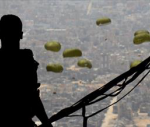You are here
Unravelling the Arab Spring narrative
Dec 22,2014 - Last updated at Dec 22,2014
Four years ago, Tunisia and the Egypt erupted in broad popular revolts. At first, analysts, Arab and Westerners alike, were confounded.
When Libya, Bahrain, Yemen and Syria followed, in short order, the upheavals came to be described as the “Arab Spring” — the assumption being that what was occurring in the Middle East would unfold in a manner reminiscent of the rapid transformations that took place in Eastern and Central Europe following the collapse of the Soviet Union.
The model envisioned by the term “Arab Spring” was relatively straightforward. A spark had been ignited in Tunisia that would catch fire across the region, bringing fundamental social and political transformation in its wake.
It was a simple, linear trajectory from dictatorship to democracy. Many experts were certain that this would be the way the Arab Spring would progress.
However, when Zogby Research Services (ZRS) polled in Arab countries in late 2011, it found that public opinion was less certain.
For example, when we asked citizens in Egypt, Tunisia, Jordan, Lebanon, Saudi Arabia and UAE whether they believed the Middle East was better off or worse off as a result of the Arab Spring, the responses were largely divided between those who said that they felt the Arab world was “better off” and those who thought that it might be “too early to tell”.
This mix of being both hopeful and tentative reflected the uncertainty that many felt at the collapse of the old order.
ZRS polled in most of these same countries again this autumn, to see what the Arab public now felt about the “Arab Spring”.
What we found was that the mood has soured, with the number of those saying that the region is “worse off” more than tripling or at least doubling over the one in 2011.
We also found that what was once projected as a simple narrative with a single trajectory had evolved into a far more complex portrait of individual stories, each with its own unique characteristics. Egypt is not Tunisia; Yemen is not Syria or Libya; and Bahrain is none of the above.
When we asked Arabs to assess developments in the countries that had experienced upheavals, and how hopeful they were that each would produce a brighter future, only Tunisia fared well.
Egypt was seen as moving in a positive direction only by Emiratis and Saudis (whose countries have invested heavily in Egypt).
While reviews of Yemen’s path were somewhat mixed, we noted that the poll was completed before Houthi allied forces overran Sanaa, bringing new uncertainty to that country.
Libya was judged to be significantly worse off than before the Arab Spring began. And the overwhelming majority of respondents in all countries had little hope that the situation in Syria or Libya would be resolved in the next five years.
One by-product of the Arab Spring was the empowering of the Muslim Brotherhood in many of the affected countries.
In our poll, we found that respondents demonstrated little support for the role of the Brotherhood in their own country, but there was an acknowledgment of the positive role the group had played in Tunisia.
The Brotherhood received mixed reviews for its role in Egypt.
A most revealing result was the near even positive/negative assessment (43 per cent-44 per cent) Egyptians gave to the Brotherhood’s impact on developments in their country.
This finding, which will likely be rejected by some, matches the results found by other polling companies and continues the upwards climb in the Brotherhood’s ratings in polls we have conducted in Egypt in the last two years.
It does not necessarily translate into a measure of the group’s popularity as it does into a growing uneasiness with the current trajectory of developments in Egypt.
Evidence of this unease can be found in responses we received when we found Egyptians divided as to whether the situation in their country had become better or worse since the beginning of the Arab Spring: 30 per cent said “better” and 29 per cent said “worse”.
In addition to the unravelling of the Arab Spring and the role of the Muslim Brotherhood, other factors explored in our survey were regional views of the bloody conflict in Syria, the emergence of the Islamic State (IS), and the growth of the twin cancers of radicalisation and sectarianism.
What we found was universal concern with the continuing war in Syria, concern with the impact that it was having on the broader region (the refugee crisis that is overwhelming Lebanon and Jordan and the growth of sectarian division and radicalism) and fear that Syria might fragment into destabilising sect-based entities.
There was no confidence that this conflict would end soon or that a way might be found to achieve a negotiated solution to resolve it. In every country but Lebanon, there was rejection of the Assad regime.
There is near universal rejection of IS and deep concern about the impact that this movement is having on the region. At the same time, the lack of confidence in the US that we found in our June 2014 poll and the low favourable ratings Arabs give to US involvement in the region combine to create less than enthusiastic support for a Western-led effort to confront IS.
In fact, only in Egypt and Iraq were slight majorities in favour of a role for the West in this conflict. In Lebanon, Jordan, Saudi Arabia and UAE majorities were opposed.
After reviewing the results of this study, what emerges is a region deeply conflicted about the developments of the past four years.
What had been presented as a simple storyline of progress at the beginning of the Arab Spring has become a troubling tale of more steps backward than forward.













